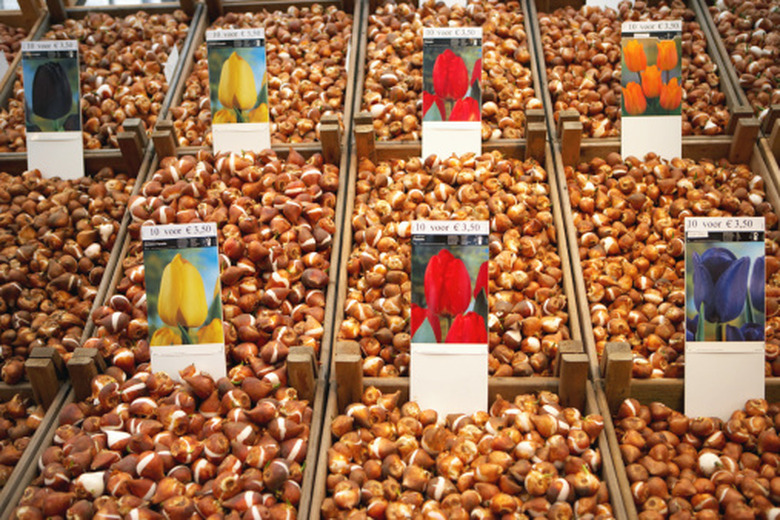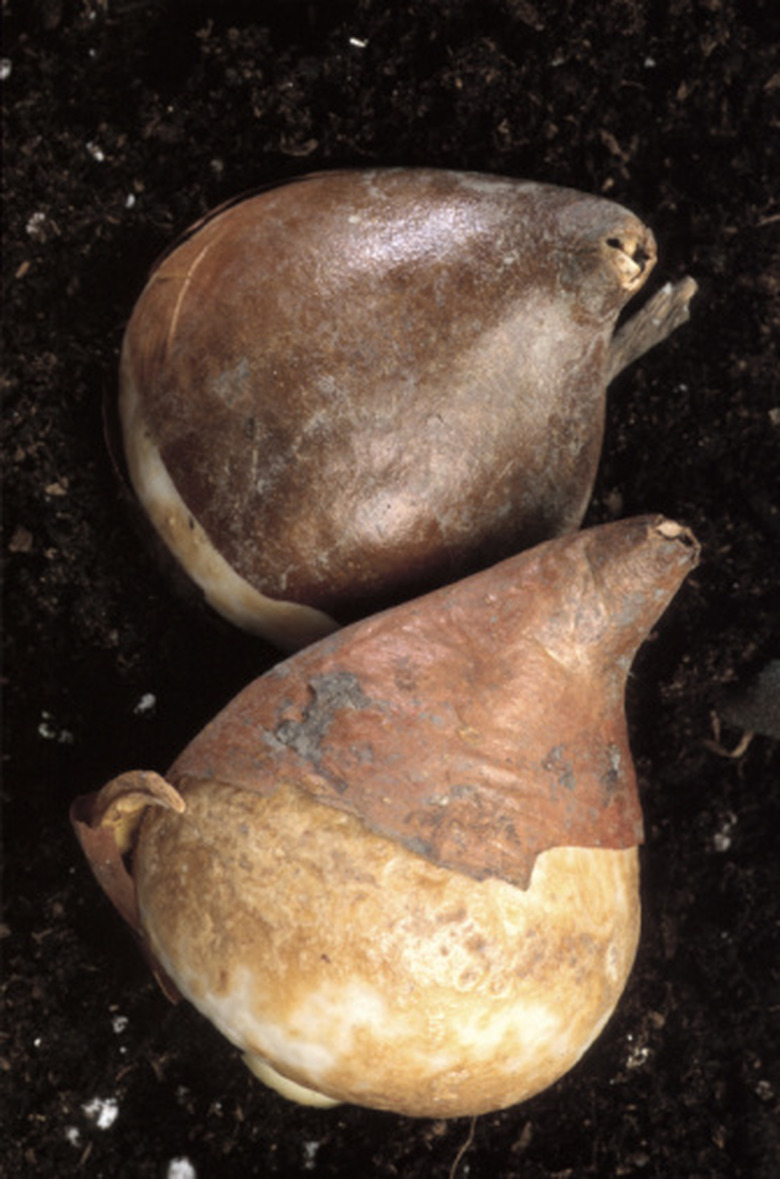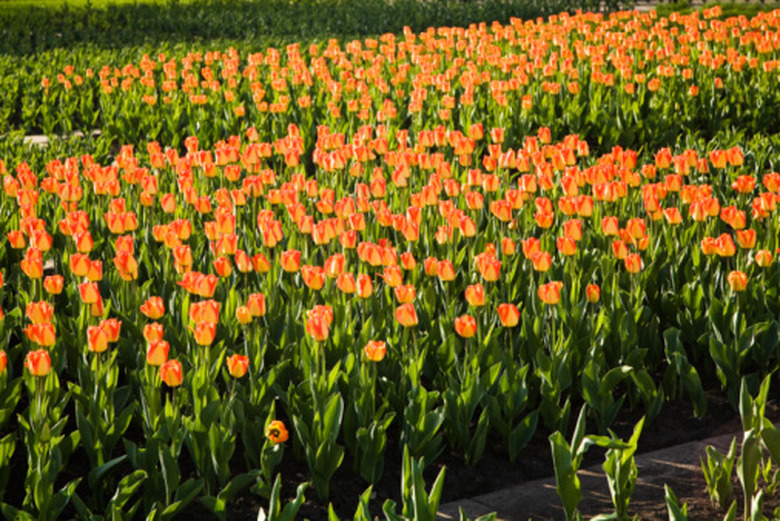When To Plant Tulips In The Middle Southern States?
The Mid-South traditionally is a term used for the region broadly around the corridor from Memphis to Nashville, Tennessee. It's not quite far enough south to be truly the "Deep South."
The Mid-South traditionally is a term used for the region broadly around the corridor from Memphis to Nashville, Tennessee. It's not quite far enough south to be truly the "Deep South." In a broader context for gardeners, the middle Southern states includes the wide band from northern Oklahoma and southern Missouri eastward to the Great Smoky Mountains. Tulips are planted after the first fall frost occurs, anytime from Oct. 15 to Dec 1.
Planting Time Frame
While tulip bulbs are sold in garden centers starting as early as September, gardeners in the middle Southern states need to hold off planting until the soil cools down in fall — anytime from mid-October to early December. The elevations across the South may affect precise timing, but certainly wait to plant the bulbs until after the first fall frost. November is an ideal time across the entire region, as the garden soil has cooled down to around 50 degrees Fahrenheit.
- The Mid-South traditionally is a term used for the region broadly around the corridor from Memphis to Nashville, Tennessee.
- The elevations across the South may affect precise timing, but certainly wait to plant the bulbs until after the first fall frost.
The Need for Winter Chilling
Tulip bulbs need to establish some preliminary roots after planting before the winter cold begins to develop frost in the garden soil. Then, across the winter, the soil temperatures remains in the 30 to 40 F range. This cooling period is required for the flower bud to initially form inside the tulip bulb. Ten to 12 weeks of these chilly soil temperatures must occur for proper flowering later in spring.
Tulips in the South
Tulips are short-lived bulbs in the southern United States because the climate isn't ideal. In summer, the soil gets way too warm and seasonal droughts are frequent. By May, the heat causes remaining tulip leaves to wither too quickly, not producing enough food to replenish the bulbs. Therefore, the bulbs poorly flower a second year and gardeners regard them as annuals and replant each fall. If tulips do not receive enough winter chill, a condition known as blasting occurs. Blasting is when the flower develops on a short stem and opens, then the flower stem elongates. Tulips should send up a long stem before the flower colors up an opens.
- Tulip bulbs need to establish some preliminary roots after planting before the winter cold begins to develop frost in the garden soil.
- By May, the heat causes remaining tulip leaves to wither too quickly, not producing enough food to replenish the bulbs.
Proper Planting Depth
Dig a planting hole that is 6 to 7 inches deep. Place the tulip bulb with the wider side down and pointed tip upward. A basic guideline is to plant the tulip bulb three times deeper than the bulb is tall. Therefore, a 2-inch tall bulb is planted in a 6-inch deep hole. If your soil is heavy clay, plant 1/2 to 1 inch more shallowly, and up to 1 inch deeper if the garden soil is sandy and light in texture.


